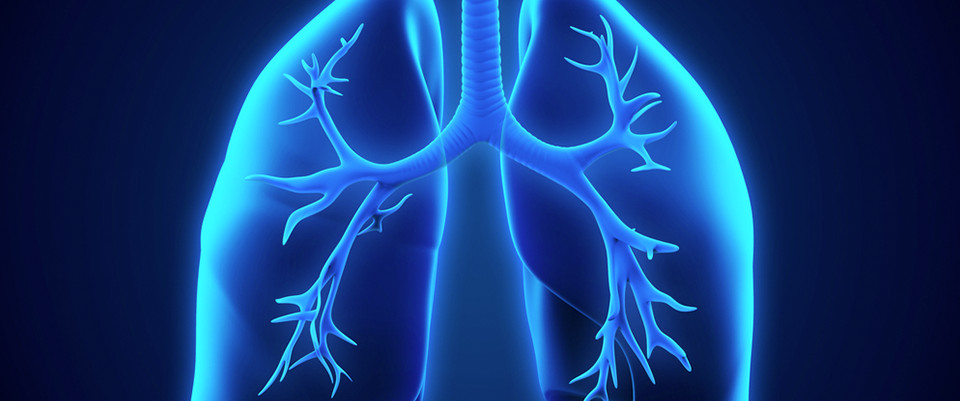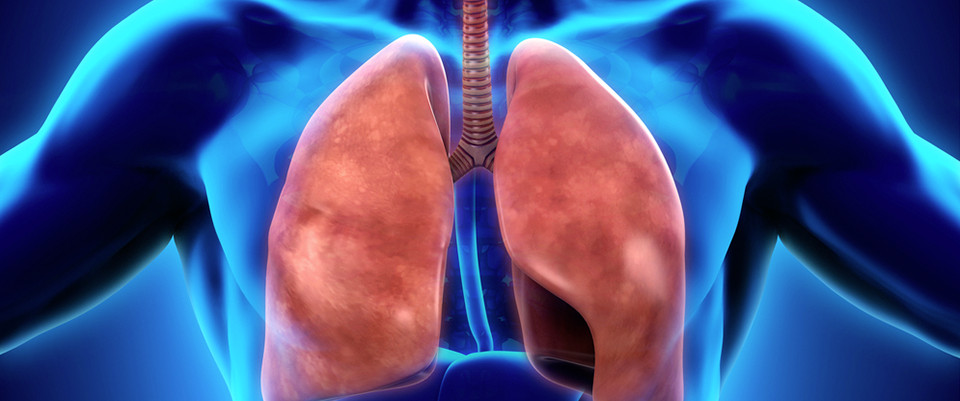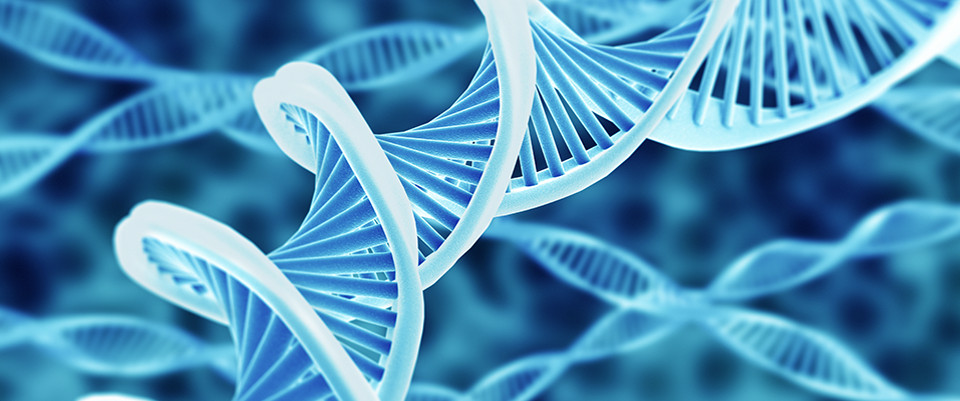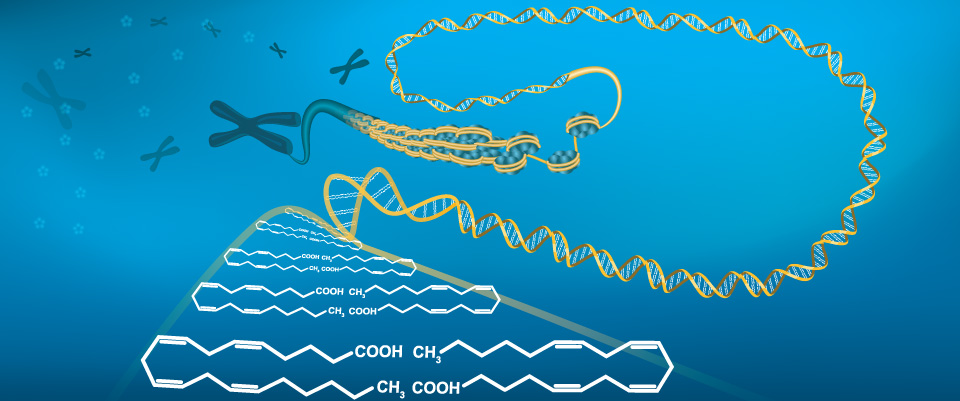PubMed
Controlling for confounding variables in MS-omics protocol: why modularity matters.
Related Articles
Controlling for confounding variables in MS-omics protocol: why modularity matters.
Brief Bioinform. 2014 Sep;15(5):768-70
Authors: Smith R, Ventura D, Prince JT
Abstract
As the field of bioinformatics research continues to grow, more and more novel techniques are proposed to meet new challenges and improvements upon solutions to long-standing problems. These include data processing techniques and wet lab protocol techniques. Although the literature is consistently thorough in experimental detail and variable-controlling rigor for wet lab protocol techniques, bioinformatics techniques tend to be less described and less controlled. As the validation or rejection of hypotheses rests on the experiment's ability to isolate and measure a variable of interest, we urge the importance of reducing confounding variables in bioinformatics techniques during mass spectrometry experimentation.
PMID: 23894105 [PubMed - indexed for MEDLINE]
metabolomics; +21 new citations
21 new pubmed citations were retrieved for your search.
Click on the search hyperlink below to display the complete search results:
metabolomics
These pubmed results were generated on 2015/05/29PubMed comprises more than 24 million citations for biomedical literature from MEDLINE, life science journals, and online books.
Citations may include links to full-text content from PubMed Central and publisher web sites.
Systems biology and metabolic modelling unveils limitations to polyhydroxybutyrate accumulation in sugarcane leaves; lessons for C4 engineering.
Systems biology and metabolic modelling unveils limitations to polyhydroxybutyrate accumulation in sugarcane leaves; lessons for C4 engineering.
Plant Biotechnol J. 2015 May 25;
Authors: McQualter RB, Bellasio C, Gebbie LK, Petrasovits LA, Palfreyman RW, Hodson MP, Plan MR, Blackman DM, Brumbley SM, Nielsen LK
Abstract
In planta production of the bioplastic polyhydroxybutyrate (PHB) is one important way in which plant biotechnology can address environmental problems and emerging issues related to peak oil. However, high biomass C4 plants such as maize, switch grass and sugarcane develop adverse phenotypes including stunting, chlorosis and reduced biomass as PHB levels in leaves increase. In this study, we explore limitations to PHB accumulation in sugarcane chloroplasts using a systems biology approach, coupled with a metabolic model of C4 photosynthesis. Decreased assimilation was evident in high PHB-producing sugarcane plants, which also showed a dramatic decrease in sucrose and starch content of leaves. A subtle decrease in the C/N ratio was found which was not associated with a decrease in total protein content. An increase in amino acids used for nitrogen recapture was also observed. Based on the accumulation of substrates of ATP-dependent reactions, we hypothesized ATP starvation in bundle sheath chloroplasts. This was supported by mRNA differential expression patterns. The disruption in ATP supply in bundle sheath cells appears to be linked to the physical presence of the PHB polymer which may disrupt photosynthesis by scattering photosynthetically active radiation and/or physically disrupting thylakoid membranes.
PMID: 26015295 [PubMed - as supplied by publisher]
Hsp70 and the Co-Chaperone StiA (Hop) Orchestrate Hsp90-Mediated Caspofungin Tolerance in Aspergillus fumigatus.
Hsp70 and the Co-Chaperone StiA (Hop) Orchestrate Hsp90-Mediated Caspofungin Tolerance in Aspergillus fumigatus.
Antimicrob Agents Chemother. 2015 May 26;
Authors: Lamoth F, Juvvadi PR, Soderblom EJ, Moseley MA, Steinbach WJ
Abstract
Aspergillus fumigatus is the primary etiologic agent of invasive aspergillosis (IA), a major cause of death among immunosuppressed patients. Echinocandins (e.g. caspofungin) are increasingly used as second-line therapy for IA, but their activity is only fungistatic. The heat shock protein 90 (Hsp90) was previously shown to trigger tolerance to caspofungin and the paradoxical effect (i.e. decreased efficacy of caspofungin at higher concentrations). Here, we demonstrate the key role of another molecular chaperone, Hsp70, in governing the stress response to caspofungin via Hsp90 and their co-chaperone Hop/Sti1 (StiA in A. fumigatus). Mutation of the StiA-interacting domain of Hsp70 (C-terminal EELD motif) impaired thermal adaptation and caspofungin tolerance with loss of the caspofungin paradoxical effect. Impaired Hsp90 function and increased susceptibility to caspofungin was also observed following pharmacologic inhibition of the C-terminal domain of Hsp70 by pifithrin-μ or after stiA deletion, further supporting the link between Hsp70, StiA and Hsp90 in governing caspofungin tolerance. StiA was not required for the physical interaction between Hsp70 and Hsp90, but had distinct roles in regulating their function in caspofungin and heat stress responses. In conclusion, this study deciphering the physical and functional interactions of the Hsp70-StiA-Hsp90 complex provides new insights into the mechanisms of tolerance to caspofungin in A. fumigatus and revealed a key C-terminal motif of Hsp70, which can be targeted by specific inhibitors, such as pifithrin-μ, to enhance caspofungin antifungal activity against A. fumigatus.
PMID: 26014950 [PubMed - as supplied by publisher]
Innovation in metabolomics to improve personalized healthcare.
Innovation in metabolomics to improve personalized healthcare.
Ann N Y Acad Sci. 2015 May 26;
Authors: Cacciatore S, Loda M
Abstract
Metabolomics is the systemic study of all small molecules (metabolites) and their concentration as affected by pathological and physiological alterations or environmental or other factors. Metabolic alterations represent a "window" on the complex interactions between genetic expression, enzyme activity, and metabolic reactions. Techniques, including nuclear magnetic resonance spectroscopy, mass spectrometry, Fourier-transform infrared, and Raman spectroscopy, have led to significant advances in metabolomics. The field is shifting from feasibility studies to biological and clinical applications. Fields of application range from cancer biology to stem cell research and assessment of xenobiotics and drugs in tissues and single cells. Cross-validation across high-throughput platforms has allowed findings from expression profiling to be confirmed with metabolomics. Specific genetic alterations appear to drive unique metabolic programs. These, in turn, can be used as biomarkers of genetic subtypes of prostate cancer or as discovery tools for therapeutic targeting of metabolic enzymes. Thus, metabolites in blood may serve as biomarkers of tumor state, including inferring driving oncogenes. Novel applications such as these suggest that metabolic profiling may be utilized in refining personalized medicine.
PMID: 26014591 [PubMed - as supplied by publisher]
Brain metabolomics in rats after administration of ketamine.
Brain metabolomics in rats after administration of ketamine.
Biomed Chromatogr. 2015 May 26;
Authors: Wen C, Zhang M, Zhang Y, Sun F, Ma J, Hu L, Lin G, Wang X
Abstract
In this study, we developed a brain metabolomic method, based on gas chromatography-mass spectrometry (GC/MS), to evaluate the effect of ketamine on rats. Pattern recognition analysis, including both principal component analysis (PCA) and partial least squares-discriminate analysis (PLS-DA) revealed that ketamine induced metabolic perturbations. Compared to the control group, the level of glycerol, uridine, cholesterol in rat brain of the ketamine group (50 mg/kg, 14 days) decreased, while the urea levels increased. Our results indicate that metabolomic methods based on GC/MS may be useful to elucidate ketamine abuse through the exploration of biomarkers.
PMID: 26014584 [PubMed - as supplied by publisher]
Metabolomic analysis of wild and transgenic Nicotiana langsdorffii plants exposed to abiotic stresses: unraveling metabolic responses.
Metabolomic analysis of wild and transgenic Nicotiana langsdorffii plants exposed to abiotic stresses: unraveling metabolic responses.
Anal Bioanal Chem. 2015 May 27;
Authors: Scalabrin E, Radaelli M, Rizzato G, Bogani P, Buiatti M, Gambaro A, Capodaglio G
Abstract
Nicotiana langsdorffii plants, wild and transgenic for the Agrobacterium rhizogenes rol C gene and the rat glucocorticoid receptor (GR) gene, were exposed to different abiotic stresses (high temperature, water deficit, and high chromium concentrations). An untargeted metabolomic analysis was carried out in order to investigate the metabolic effects of the inserted genes in response to the applied stresses and to obtain a comprehensive profiling of metabolites induced during abiotic stresses. High-performance liquid chromatography separation (HPLC) coupled to high-resolution mass spectrometry (HRMS) enabled the identification of more than 200 metabolites, and statistical analysis highlighted the most relevant compounds for each plant treatment. The plants exposed to heat stress showed a unique set of induced secondary metabolites, some of which were known while others were not previously reported for this kind of stress; significant changes were observed especially in lipid composition. The role of trichome, as a protection against heat stress, is here suggested by the induction of both acylsugars and glykoalkaloids. Water deficit and Cr(VI) stresses resulted mainly in enhanced antioxidant (HCAs, polyamine) levels and in the damage of lipids, probably as a consequence of reactive oxygen species (ROS) production. Moreover, the ability of rol C expression to prevent oxidative burst was confirmed. The results highlighted a clear influence of GR modification on plant stress response, especially to water deficiency-a phenomenon whose applications should be further investigated. This study provides new insights into the field of system biology and demonstrates the importance of metabolomics in the study of plant functioning. Graphical Abstract Untargeted metabolomic analysis was applied to wild type, GR and RolC modified Nicotiana Langsdorffii plants exposed to heat, water and Cr(VI) stresses. The key metabolites, highly affected by stress application, were identified, allowing to outline the main metabolic responses to stress in each plant genotype.
PMID: 26014284 [PubMed - as supplied by publisher]
Women at extreme risk for obesity related carcinogenesis: Baseline endometrial pathology and impact of bariatric surgery on weight, metabolic profiles and quality of life.
Women at extreme risk for obesity related carcinogenesis: Baseline endometrial pathology and impact of bariatric surgery on weight, metabolic profiles and quality of life.
Gynecol Oncol. 2015 May 22;
Authors: Modesitt SC, Hallowell PT, Slack-Davis JK, Michalek RD, Atkins KA, Kelley SL, Arapovic S, Shupnik MA, Hoehn K
Abstract
OBJECTIVES: The study objectives were to determine baseline endometrial histology in morbidly obese women undergoing bariatric surgery and to assess the surgical intervention's impact on serum metabolic parameters, quality of life (QOL), and weight.
METHODS: Women undergoing bariatric surgery were enrolled. Demographic and clinicopathologic data, serum, endometrium (if no prior hysterectomy) were collected preoperatively and serum collected postoperatively. Serum global biochemical data were assessed pre/postoperatively. Welch's two sample t-tests and paired t-tests were used to identify significant differences.
RESULTS: Mean age of the 71 women enrolled was 44.2years, mean body mass index (BMI) was 50.9kg/m(2), and mean weight loss was 45.7kg. Endometrial biopsy results: Proliferative (13/30; 43%), insufficient (8/30; 27%), secretory (6/30; 20%) and hyperplasia (3/30; 10%-1 complex atypical, 2 simple). QOL data showed significant improvement in physical component scores (PCS means 33.9 vs. 47.2 before/after surgery; p<0.001). Twenty women underwent metabolic analysis which demonstrated significantly improved glucose homeostasis, improved insulin responsiveness, and free fatty acid levels. Significant perturbations in tryptophan, phenylalanine and heme metabolism suggested decreased inflammation and alterations in the intestinal microbiome. Most steroid hormones were not significantly impacted with the exception of decreased DHEAS and 4-androsten metabolites.
CONCLUSIONS: Bariatric surgery is accompanied by an improved physical quality of life as well as beneficial changes in glucose homeostasis, insulin responsiveness, and inflammation to a greater extent than the hormonal milieu. The potential cancer protective effects of bariatric surgery may be due to other mechanisms other than simply hormonal changes.
PMID: 26013696 [PubMed - as supplied by publisher]
Identification of biochemical differences between different forms of male infertility by nuclear magnetic resonance (NMR) spectroscopy.
Related Articles
Identification of biochemical differences between different forms of male infertility by nuclear magnetic resonance (NMR) spectroscopy.
J Assist Reprod Genet. 2014 Sep;31(9):1195-204
Authors: Jayaraman V, Ghosh S, Sengupta A, Srivastava S, Sonawat HM, Narayan PK
Abstract
PURPOSE: The aim of this study was to analyze the seminal plasma of patients with idiopathic/male factor infertility and healthy controls with proven fertility by NMR spectroscopy, with a hope of establishing difference in biomarker profiles, if any, between the groups.
METHODS: A total of 103 subjects visiting the infertility clinic of Manipal University with normozoospermic parameters, oligozoospermia, asthenozoospermia, azoospermia and teratozoospermia were included. Semen characteristics were analysed by standard criteria. Seminal plasma was subjected to NMR spectroscopy at a 700 MHz (1)H frequency. The resultant data was analyzed by appropriate software.
RESULTS: The analysis revealed significant differences between the fertile control group and other forms of male infertility. Interestingly, seminal plasma profile of the idiopathic infertility group showed distinct segregation from the control population as well as other infertile groups. The difference in biomarker profiles between the idiopathic infertility and the rest of the groups combined could originate from either the up-regulation or down regulation of a several compounds, including lysine, arginine, tyrosine, citrate, proline and fructose.
CONCLUSION: Our data suggests the presence of a metabolic reason behind the origin of idiopathic infertility. (1)H NMR based metabonomic profiling based on concentration of biomarker lysine has the potential to aid in the detection and diagnosis of idiopathic infertility in an efficient manner.
PMID: 24965760 [PubMed - indexed for MEDLINE]
Fusarium inhibition by wild populations of the medicinal plant Salvia africana-lutea L. linked to metabolomic profiling.
Related Articles
Fusarium inhibition by wild populations of the medicinal plant Salvia africana-lutea L. linked to metabolomic profiling.
BMC Complement Altern Med. 2014;14:99
Authors: Nkomo MM, Katerere DD, Vismer HH, Cruz TT, Balayssac SS, Malet-Martino MM, Makunga NN
Abstract
BACKGROUND: Salvia africana-lutea L., an important medicinal sage used in the Western Cape (South Africa), can be termed a 'broad-spectrum remedy' suggesting the presence of a multiplicity of bioactive metabolites. This study aimed at assessing wild S. africana-lutea populations for chemotypic variation and anti-Fusarium properties.
METHODS: Samples were collected from four wild growing population sites (Yzerfontein, Silwerstroomstrand, Koeberg and Brackenfell) and one garden growing location in Stellenbosch. Their antifungal activities against Fusarium verticillioides (strains: MRC 826 and MRC 8267) and F. proliferatum (strains: MRC 6908 and MRC 7140) that are aggressive mycotoxigenic phytopathogens were compared using an in vitro microdilution assay. To correlate antifungal activity to chemical profiles, three techniques viz. Gas chromatography-mass spectrometry (GC-MS); Liquid chromatography-mass spectrometry (LC-MS) and 1H Nuclear Magnetic Resonance (NMR) were employed. Principal Component Analysis (PCA) was applied to the NMR data. The partial least squares-discriminant analysis (PLS-DA) was used to integrate LC-MS and NMR data sets. All statistics were performed with the SIMCA-P+12.0 software.
RESULTS: The dichloromethane:methanol (1:1; v/v) extracts of the plant species collected from Stellenbosch demonstrated the strongest inhibition of F. verticillioides and F. proliferatum with minimum inhibitory concentration (MIC) values of 0.031 mg ml(-1) and 0.063 mg ml(-1) respectively. GC-MS showed four compounds which were unique to the Stellenbosch extracts. By integrating LC-MS and 1H NMR analyses, large chemotype differences leading to samples grouping by site when a multivariate analysis was performed, suggested strong plant-environment interactions as factors influencing metabolite composition. Signals distinguishing the Stellenbosch profile were in the aromatic part of the 1H NMR spectra.
CONCLUSIONS: This study shows the potential of chemotypes of Salvia africana-lutea in controlling fungal growth and consequently mycotoxin production. Products for use in the agricultural sector may be developed from such chemotypes.
PMID: 24621275 [PubMed - indexed for MEDLINE]
Computational Metabolomics Operations at BioCyc.org.
Computational Metabolomics Operations at BioCyc.org.
Metabolites. 2015;5(2):291-310
Authors: Karp PD, Billington R, Holland TA, Kothari A, Krummenacker M, Weaver D, Latendresse M, Paley S
Abstract
BioCyc.org is a genome and metabolic pathway web portal covering 5500 organisms, including Homo sapiens, Arabidopsis thaliana, Saccharomyces cerevisiae and Escherichia coli. These organism-specific databases have undergone variable degrees of curation. The EcoCyc (Escherichia coli Encyclopedia) database is the most highly curated; its contents have been derived from 27,000 publications. The MetaCyc (Metabolic Encyclopedia) database within BioCyc is a "universal" metabolic database that describes pathways, reactions, enzymes and metabolites from all domains of life. Metabolic pathways provide an organizing framework for analyzing metabolomics data, and the BioCyc website provides computational operations for metabolomics data that include metabolite search and translation of metabolite identifiers across multiple metabolite databases. The site allows researchers to store and manipulate metabolite lists using a facility called SmartTables, which supports metabolite enrichment analysis. That analysis operation identifies metabolite sets that are statistically over-represented for the substrates of specific metabolic pathways. BioCyc also enables visualization of metabolomics data on individual pathway diagrams and on the organism-specific metabolic map diagrams that are available for every BioCyc organism. Most of these operations are available both interactively and as programmatic web services.
PMID: 26011592 [PubMed - as supplied by publisher]
A Comprehensive Metabolomic Investigation in Urine of Mice Exposed to Strontium-90.
A Comprehensive Metabolomic Investigation in Urine of Mice Exposed to Strontium-90.
Radiat Res. 2015 May 26;
Authors: Goudarzi M, Weber WM, Mak TD, Chung J, Doyle-Eisele M, Melo DR, Strawn SJ, Brenner DJ, Guilmette RA, Fornace AJ
Abstract
Internal emitters such as Strontium-90 ((90)Sr) pose a substantial health risk during and immediately after a nuclear disaster or detonation of an improvised device. The environmental persistency and potency of (90)Sr calls for urgent development of high-throughput tests to establish levels of exposure and to help triage potentially exposed individuals who were in the immediate area of the disaster. In response to these concerns, our team focused on developing a robust metabolomic profile for (90)Sr exposure in urine using a mouse model. The sensitivity of modern time-of-flight mass spectrometry (TOFMS) combined with the separation power of ultra performance liquid chromatography (UPLC) was used to determine perturbations in the urinary metabolome of mice exposed to (90)Sr. The recently developed statistical suite, MetaboLyzer, was used to explore the mass spectrometry data. The results indicated a significant change in the urinary abundances of metabolites pertaining to butanoate metabolism, vitamin B metabolism, glutamate and fatty acid oxidation. All of these pathways are either directly or indirectly connected to the central energy production pathway, the tricarboxylic acid (TCA) cycle. To our knowledge, this is the first in vivo metabolomics to evaluate the effects of exposure to (90)Sr using the easily accessible biofluid, urine.
PMID: 26010713 [PubMed - as supplied by publisher]
Metabolomic Fingerprint of Heart Failure with Preserved Ejection Fraction.
Metabolomic Fingerprint of Heart Failure with Preserved Ejection Fraction.
PLoS One. 2015;10(5):e0124844
Authors: Zordoky BN, Sung MM, Ezekowitz J, Mandal R, Han B, Bjorndahl TC, Bouatra S, Anderson T, Oudit GY, Wishart DS, Dyck JR, Alberta HEART
Abstract
BACKGROUND: Heart failure (HF) with preserved ejection fraction (HFpEF) is increasingly recognized as an important clinical entity. Preclinical studies have shown differences in the pathophysiology between HFpEF and HF with reduced ejection fraction (HFrEF). Therefore, we hypothesized that a systematic metabolomic analysis would reveal a novel metabolomic fingerprint of HFpEF that will help understand its pathophysiology and assist in establishing new biomarkers for its diagnosis.
METHODS AND RESULTS: Ambulatory patients with clinical diagnosis of HFpEF (n = 24), HFrEF (n = 20), and age-matched non-HF controls (n = 38) were selected for metabolomic analysis as part of the Alberta HEART (Heart Failure Etiology and Analysis Research Team) project. 181 serum metabolites were quantified by LC-MS/MS and 1H-NMR spectroscopy. Compared to non-HF control, HFpEF patients demonstrated higher serum concentrations of acylcarnitines, carnitine, creatinine, betaine, and amino acids; and lower levels of phosphatidylcholines, lysophosphatidylcholines, and sphingomyelins. Medium and long-chain acylcarnitines and ketone bodies were higher in HFpEF than HFrEF patients. Using logistic regression, two panels of metabolites were identified that can separate HFpEF patients from both non-HF controls and HFrEF patients with area under the receiver operating characteristic (ROC) curves of 0.942 and 0.981, respectively.
CONCLUSIONS: The metabolomics approach employed in this study identified a unique metabolomic fingerprint of HFpEF that is distinct from that of HFrEF. This metabolomic fingerprint has been utilized to identify two novel panels of metabolites that can separate HFpEF patients from both non-HF controls and HFrEF patients.
CLINICAL TRIAL REGISTRATION: ClinicalTrials.gov NCT02052804.
PMID: 26010610 [PubMed - as supplied by publisher]
Metabolic analysis of knee synovial fluid as a potential diagnostic approach for osteoarthritis.
Metabolic analysis of knee synovial fluid as a potential diagnostic approach for osteoarthritis.
J Orthop Res. 2015 May 25;
Authors: Mickiewicz B, Kelly JJ, Ludwig TE, Weljie AM, Wiley JP, Schmidt TA, Vogel HJ
Abstract
Osteoarthritis (OA) is a leading cause of chronic joint pain in the older human population. Diagnosis of OA at an earlier stage may enable the development of new treatments to one day effectively modify the progression and prognosis of the disease. In this work, we explore whether an integrated metabolomics approach could be utilized for the diagnosis of OA. Synovial fluid (SF) samples were collected from symptomatic chronic knee OA patients and normal human cadaveric knee joints. The samples were analyzed using (1) H nuclear magnetic resonance (NMR) spectroscopy and gas chromatography-mass spectrometry (GC-MS) followed by multivariate statistical analysis. Based on the metabolic profiles we were able to distinguish OA patients from the controls and validate the statistical models. Moreover, we have integrated the (1) H NMR and GC-MS results and we found that 11 metabolites were statistically important for the separation between OA and normal SF. Additionally, statistical analysis showed an excellent predictive ability of the constructed metabolomics model (area under the receiver operating characteristic curve = 1.0). Our findings indicate that metabolomics might serve as a promising approach for the diagnosis and prognosis of degenerative changes in the knee joint and should be further validated in clinical settings. This article is protected by copyright. All rights reserved.
PMID: 26010167 [PubMed - as supplied by publisher]
Whole Blood Reveals More Metabolic Detail of the Human Metabolome Than Serum as Measured by 1H-NMR Spectroscopy: Implications for Sepsis Metabolomics.
Whole Blood Reveals More Metabolic Detail of the Human Metabolome Than Serum as Measured by 1H-NMR Spectroscopy: Implications for Sepsis Metabolomics.
Shock. 2015 May 22;
Authors: Stringer KA, Younger JG, McHugh C, Yeomans L, Finkel MA, Puskarich MA, Jones AE, Trexel J, Karnovsky A
Abstract
Serum is a common sample of convenience for metabolomics studies. Its processing time can be lengthy and may result in the loss of metabolites including those of red blood cells (RBC). Unlike serum, whole blood (WB) is quickly processed, minimizing the influence of variable hemolysis while including RBC metabolites. To determine differences between serum and WB metabolomes, both sample types, collected from healthy volunteers, were assayed by H-NMR spectroscopy. A total of 34 and 50 aqueous metabolites were quantified from serum and WB, respectively. Free hemoglobin (Hgb) levels in serum were measured and the correlation between Hgb and metabolite concentrations was determined. All metabolites detected in serum were at higher concentrations in WB with the exception of acetoacetate and propylene glycol. The 18 unique metabolites of WB included adenosine, AMP, ADP and ATP, which are associated with RBC metabolism. The use of serum results in the underrepresentation of a number of metabolic pathways including branched chain amino acid degradation and glycolysis and gluconeogenesis. The range of free Hgb in serum was 0.03-0.01 g/dL and 8 metabolites were associated (p ≤ 0.05) with free Hgb. The range of free Hgb in serum samples from 18 sepsis patients was 0.02-0.46 g/dL. WB and serum have unique aqueous metabolite profiles but the use of serum may introduce potential pathway bias. Use of WB for metabolomics may be particularly important for studies in diseases like sepsis in which RBC metabolism is altered and mechanical and sepsis-induced hemolysis contributes to variance in the metabolome.
PMID: 26009817 [PubMed - as supplied by publisher]
Investigation of vitamin B6 inadequacy, induced by exposure to the anti-B6 factor 1-amino D-proline, on plasma lipophilic metabolites of rats: a metabolomics approach.
Investigation of vitamin B6 inadequacy, induced by exposure to the anti-B6 factor 1-amino D-proline, on plasma lipophilic metabolites of rats: a metabolomics approach.
Eur J Nutr. 2015 May 26;
Authors: Mayengbam S, House JD, Aliani M
Abstract
PURPOSE: Vitamin B6 status in the body is affected by several factors including dietary supply of the antivitamin B6 factor, 1-amino D-proline (1ADP), which is present in flaxseed. Owing to the prevalence of moderate B6 deficiency in the general population, a co-occurrence of 1ADP may lead to a further deterioration of B6 status. To this end, we applied a nontargeted metabolomics approach to identify potential plasma lipophilic biomarkers of deleterious effect of 1ADP on moderately vitamin B6-deficient rats using a high-performance liquid chromatography/quadrupole time-of-flight mass spectrometry.
METHODS: Twenty-four rats were fed with a semi-purified diet containing pyridoxine·HCl (PN·HCl) either 7 mg/kg diet (optimal B6) or 0.7 mg/kg diet (moderate B6). The rats were divided into four treatments (n = 6), and one treatment in each B6 diet group was also fed ad libitum with 10 mg/kg diet of synthetic 1ADP. After 5 weeks of study, plasma was collected from the rats and lipophilic metabolites were extracted using acetonitrile as a solvent for analysis.
RESULTS: Ten potential plasma lipophilic biomarkers were identified out of >2500 detected entities, which showed significant differences between the treatments. Plasma glycocholic acid, glycoursodeoxycholic acid, murocholic acid, N-docosahexaenoyl GABA, N-arachidonoyl GABA, lumula, nandrolone and orthothymotinic acid concentrations were significantly elevated, while plasma cystamine and 3-methyleneoxindole concentrations were significantly reduced as a result of either low B6 status or 1ADP or their interaction.
CONCLUSION: Changes in these metabolites revealed a potential defect in pathways linked with the biosynthesis and metabolism of bile acid components, N-acyl amino acids, analgesic androgens, anti-inflammatory and neuroprotective molecules. We also noted that the changes in these biomarkers can be alleviated by the application of adequate vitamin B6.
PMID: 26009005 [PubMed - as supplied by publisher]
Liquid chromatography-mass spectrometry coupled with multivariate analysis for the characterization and discrimination of extractable and nonextractable polyphenols and glucosinolates from red cabbage and Brussels sprout waste streams.
Liquid chromatography-mass spectrometry coupled with multivariate analysis for the characterization and discrimination of extractable and nonextractable polyphenols and glucosinolates from red cabbage and Brussels sprout waste streams.
J Chromatogr A. 2015 May 12;
Authors: Gonzales GB, Raes K, Vanhoutte H, Coelus S, Smagghe G, Van Camp J
Abstract
Nonextractable polyphenol (NEP) fractions are usually ignored because conventional extraction methods do not release them from the plant matrix. In this study, we optimized the conditions for sonicated alkaline hydrolysis to the residues left after conventional polyphenol extraction of Brussels sprouts top (80°C, 4M NaOH, 30min) and stalks (60°C, 4M NaOH, 30min), and red cabbage waste streams (80°C, 4M NaOH, 45min) to release and characterize the NEP fraction. The NEP fractions of Brussels sprouts top (4.8±1.2mg gallic acid equivalents [GAE]/g dry waste) and stalks (3.3±0.2mg GAE/g dry waste), and red cabbage (11.5mg GAE/g dry waste) waste have significantly higher total polyphenol contents compared to their respective extractable polyphenol (EP) fractions (1.5±0.0, 2.0±0.0 and 3.7±0.0mg GAE/g dry waste, respectively). An LC-MS method combined with principal components analysis (PCA) and orthogonal partial least squares-discriminant analysis (OPLS-DA) was used to tentatively identify and discriminate the polyphenol and glucosinolate composition of the EP and NEP fractions. Results revealed that phenolic profiles of the EP and NEP fractions are different and some compounds are only found in either fraction in all of the plant matrices. This suggests the need to account both fractions when analyzing the polyphenol and glucosinolate profiles of plant matrices to attain a global view of their composition. This is the first report on the discrimination of the phenolic and glucosinolate profiles of the EP and NEP fractions using metabolomics techniques.
PMID: 26008597 [PubMed - as supplied by publisher]
Techniques to monitor glycolysis.
Related Articles
Techniques to monitor glycolysis.
Methods Enzymol. 2014;542:91-114
Authors: TeSlaa T, Teitell MA
Abstract
An increased flux through glycolysis supports the proliferation of cancer cells by providing additional energy in the form of ATP as well as glucose-derived metabolic intermediates for nucleotide, lipid, and protein biosynthesis. Thus, glycolysis and other metabolic pathways that control cell proliferation may represent valuable targets for therapeutic interventions and diagnostic procedures. In this context, the measurement of glucose uptake and lactate excretion by malignant cells may be useful to detect shifts in glucose catabolism, while determining the activity of rate-limiting glycolytic enzymes can provide insights into points of metabolic regulation. Moreover, metabolomic studies can be used to generate large, integrated datasets to track changes in carbon flux through glycolysis and its collateral anabolic pathways. As discussed here, these approaches can reveal and quantify the metabolic alterations that underlie malignant cell proliferation.
PMID: 24862262 [PubMed - indexed for MEDLINE]
Metabolic Signatures of Human Breast Cancer.
Metabolic Signatures of Human Breast Cancer.
Mol Cell Oncol. 2015 Jul-Sep;2(3)
Authors: Mishra P, Ambs S
Abstract
Metabolomics has emerged as a new discovery tool with the promise of identifying therapeutic targets in cancer. Recent discoveries described essential metabolomic pathways in breast cancer and characterized oncometabolites that drive tumor growth and progression. Oncogenes like MYC and tumor suppressor genes like TP53 prominently affect breast cancer biology through regulation of cell metabolism and mitochondrial biogenesis. These findings indicate that tumors with dominant mutations could be susceptible to inhibitors of disease metabolism. Moreover, various pre-clinical and clinical studies have linked tumor metabolism to therapeutic response and patient survival. Thus, recent advances suggest that metabolic profiling provides new opportunities to improve outcomes in breast cancer. In this review, we have summarized some of the identified roles of oncometabolites in breast cancer biology and highlight their clinical utility.
PMID: 26005711 [PubMed - as supplied by publisher]
BioMiner: Paving the Way for Personalized Medicine.
BioMiner: Paving the Way for Personalized Medicine.
Cancer Inform. 2015;14:55-63
Authors: Bauer C, Stec K, Glintschert A, Gruden K, Schichor C, Or-Guil M, Selbig J, Schuchhardt J
Abstract
Personalized medicine is promising a revolution for medicine and human biology in the 21st century. The scientific foundation for this revolution is accomplished by analyzing biological high-throughput data sets from genomics, transcriptomics, proteomics, and metabolomics. Currently, access to these data has been limited to either rather simple Web-based tools, which do not grant much insight or analysis by trained specialists, without firsthand involvement of the physician. Here, we present the novel Web-based tool "BioMiner," which was developed within the scope of an international and interdisciplinary project (SYSTHER) and gives access to a variety of high-throughput data sets. It provides the user with convenient tools to analyze complex cross-omics data sets and grants enhanced visualization abilities. BioMiner incorporates transcriptomic and cross-omics high-throughput data sets, with a focus on cancer. A public instance of BioMiner along with the database is available at http://systherDB.microdiscovery.de/, login and password: "systher"; a tutorial detailing the usage of BioMiner can be found in the Supplementary File.
PMID: 26005322 [PubMed]











